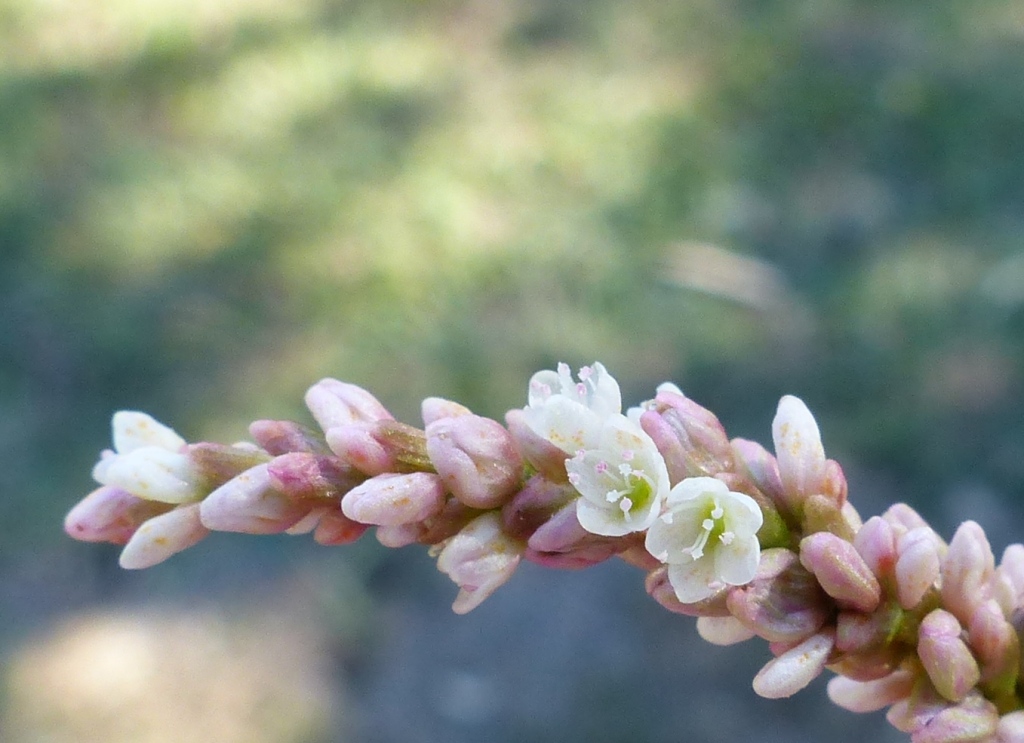Persicaria lapathifolia
(L.) Gray Pale KnotweedErect or ascending annual or biennial to c. 1.6 m high, stems usually glabrous, sometimes densely cottony, often swollen about the lower nodes. Ochreas not ciliate at apex, glabrous or with cottony hairs on sheath. Leaves lanceolate, 6–12 cm long, 8–45 mm wide, margins and main veins with short antrorsely appressed bristles, lamina glabrous or cottony-pubescent, usually densely gland-dotted on lower surface, less glandular above; petiole c. 5–15 mm long. Spikes slender, cylindric, 2–7 cm long, 4–7 mm diam., often several in a terminal, sometimes drooping panicle; peduncle c. 0.5–3 cm long; perianth segments 1.5–3 mm long, pink, often pale or greenish, free for half to two-thirds their length. Nut broadly ovate to almost orbicular, flattish, c. 2 mm long and wide, slightly roughened and dull or shining, brown. Flowers Sep.–May.
MuM, VVP, VRiv, MSB, RobP, MuF, GipP, OtP, Gold, CVU, NIS, EGL, EGU, HSF, HNF, OtR, Strz, MonT, VAlp. All States. It is variously treated as native or naturalised in the other jurisdictions in which it occurs. Europe, Asia, northern Africa. Widespread along permanent watercouses and in winter-wet areas, particularly in cooler parts of the State. Often occurring in disturbed or weedy areas.
Walsh, N.G. (1996). Polygonaceae. In: Walsh, N.G.; Entwisle, T.J., Flora of Victoria Vol. 3, Dicotyledons Winteraceae to Myrtaceae, pp. 272–295. Inkata Press, Melbourne.
 Spinning
Spinning



